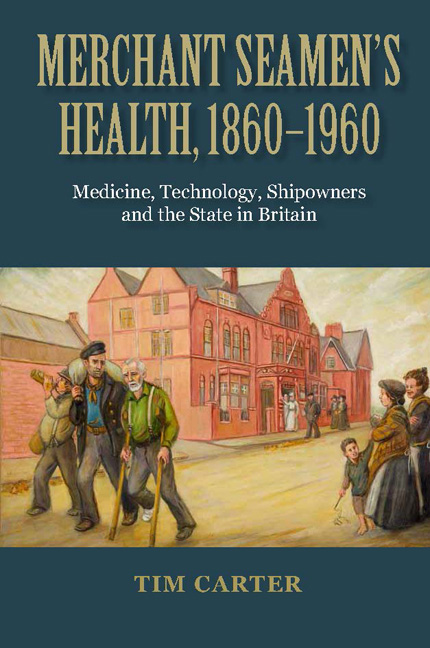Book contents
- Frontmatter
- Dedication
- Contents
- List of Illustrations
- Preface
- Acknowledgements
- List of Abbreviations
- Glossary of nautical terms used
- Introduction
- 1 Health at sea before 1860
- 2 Unseaworthy seamen
- 3 The health of merchant seamen in the nineteenth century
- 4 Injury and disease at sea in the nineteenth century
- 5 The seaman ashore: victim, threat or patient?
- 6 Bad food and donkey's breakfasts
- 7 Fit for lookout duties
- 8 The long-term health of seamen
- 9 War, manpower and fitness for service
- 10 Seamen's health in the welfare state
- 11 Retrospect and prospect
- Bibliography
- Index
3 - The health of merchant seamen in the nineteenth century
Published online by Cambridge University Press: 05 November 2014
- Frontmatter
- Dedication
- Contents
- List of Illustrations
- Preface
- Acknowledgements
- List of Abbreviations
- Glossary of nautical terms used
- Introduction
- 1 Health at sea before 1860
- 2 Unseaworthy seamen
- 3 The health of merchant seamen in the nineteenth century
- 4 Injury and disease at sea in the nineteenth century
- 5 The seaman ashore: victim, threat or patient?
- 6 Bad food and donkey's breakfasts
- 7 Fit for lookout duties
- 8 The long-term health of seamen
- 9 War, manpower and fitness for service
- 10 Seamen's health in the welfare state
- 11 Retrospect and prospect
- Bibliography
- Index
Summary
Information on disease
The 1867 Merchant Shipping Act contained a range of provisions aimed at improving the health of seamen, but was only specific about one condition – scurvy. Here was a disease with a known remedy – lemon or other citrus juice – that, if used, was often adulterated and so not fit for purpose. What were the other health problems in seamen that this Act aimed to remedy? This is not easy information to find. It is difficult to relate the disease descriptions then used, especially by non-medical people such as ship captains and British consuls, to present-day terminology.
The most detailed records are those from hospitals treating seamen, notably the Dreadnought, but also others, for instance the British Hospital in Callau (or now more commonly Callao), Peru, which saw seafarers after arduous trans-Pacific and Cape Horn passages. There are a small number of studies based on ships' log-books and rather more covering passengers and especially emigrants, where the maintenance of a log and its presentation at the end of a voyage was a statutory requirement. Contemporary articles in medical journals can give information, while the Ship Captain's Medical Guide, although not a source of quantitative information, gives a perspective on how various diseases were viewed and categorised.
In reviewing such data many aspects must be considered in addition to the contemporary nomenclature of disease.
- Type
- Chapter
- Information
- Merchant Seamen's Health, 1860–1960Medicine, Technology, Shipowners and the State in Britain, pp. 37 - 50Publisher: Boydell & BrewerPrint publication year: 2014



